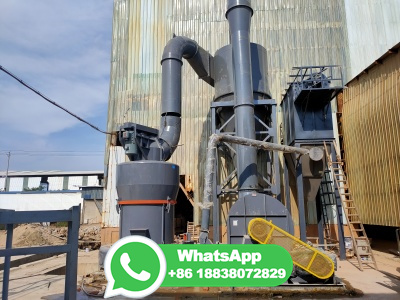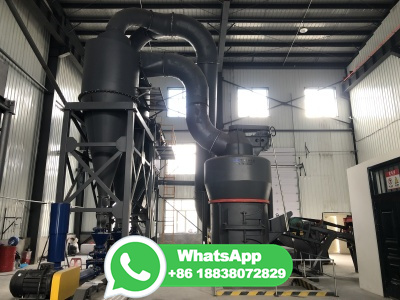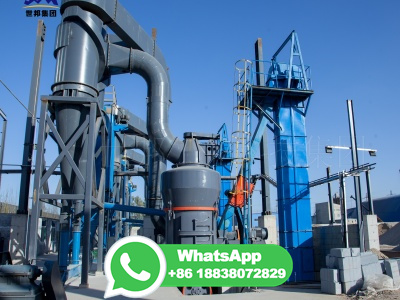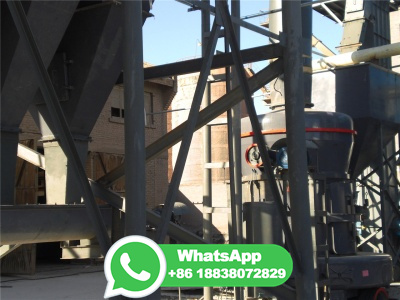
Over 100 years ago Graniterock was created to produce Crushed Granite Railroad Ballast to the burgeoning rail industry. This ballast was used to create an extensive rail network throughout Northern and Central California. Consequently, Graniterock has long been recognized as a major supplier of quality ballast products. Although ballast specifiions have evolved .
Get Price
Railroad ballast is one of the most demanding appliions for crushed stone. Railroad ballast serves as a bed for railroad tracks and provides track stability, drainage, and .
Get Price
What ever you buy, be prepared to buy a lot. Most crushed rock weighs about 80 lb per cubic foot. If you ballast deep and wide (a 6" by 6" trench full) you'll use 20 lb/ft of track. Crushed rock is usually sold by the yard, 27 cubic feet to a yard. At 20 lb/ft, you'll need about a yard of rock to ballast 100 feet of track.
Get Price
Apr 13, 2015 · Hence ballast forks are used for cleaning. Dirty ballast is made loose by means of equipment such as picks. Frames of size 150x120cm with expanded metal mesh are put parallel to the track. Dirty ballast thrown on to the mesh to separate the dirt and aggregate ballast. Required quantity of additional ballast is added to screened ballast to make ...
Get Price
Each axel on loaded rail car places a load of up to 71,500 lbs. on less than an inch of track. The railroad track structure spreads the load to the ballast below. Because ballast material is angular crushed rock, the crushed ballast locks together as a matrix, which transfers these large loads from track structure to the sub ballast below.
Get Price
Jul 26, 2021 · Limestone: The most popular crushed stone option, limestone is easily crushed and used in ready mix concrete, railroad ballast, and drain fields. Quartzite: Used for road construction, rubble, and in between railroad tracks due to its durability. Rip rap: Larger stone used for erosion control.
Get Price
Granite – Graniterock: Concrete, Building Materials, Contracting. WILSON 1½" X ¾" RAILROAD BALLAST Wilson 1½" x ¾" Railroad Ballast is a clean, crushed granite. This Ballast is .. ASTM SPECIFICATIONS PHYSICAL PROPERTIES. » More detailed.
Get Price
The crushed stones are commonly known as the 'Ballasts' and they form an important part of the railway track. The ballasts have 2 main functions : 1. To hold the railway track in place. 2. To make small adjustments in the alignment and the level of the track. If you look closely at the ballast, (be very very careful doing this), you will find ...
Get Price
Mar 14, 2009 · Warning about Ballasting with real Dirt crushed stone. Before you use real dirt or crushed stone on or near your Track especially for the purpose of Ballast make sure you run a Magnet through it to see if there is Iron fillings in the dirt. alot of dirt and sand contains alot of iron in the form of tiny Iron fillings and your Engines motor ...
Get Price
Mar 24, 2006 · The ballast on the right is what we call "crusher fines," though it has other names around the country. It is composed of crushed rock, usually 1/4 inch or smaller, and rock dust. This is the stuff to use for ballast. It tamps well and holds the track in place. To the left is squeegee, a rounded river rock that will never hold your track in ...
Get Price
Apr 06, 2019 · I am looking for advice regarding ballast for a new garden railroad which I plan to start the work on in a couple of weeks. I'll be using LGB track and DC power to rails for now. I had called our local stone supply place and they have crusher dust bulk or bagged at a good price so I went to see it today with the intention of ordering a delivery.
Get Price
The technical word for these crushed stones is "Ballast or track ballast. The tamping machine is used to pack the track ballast under railway tracks to make the tracks longlasting. Normally, a 25–30 cm thick ballast layer (crushed stone 30/60) below the bottom face of the sleeper is provided along the track. This thickness varies depend on ...
Get Price
Track Ballast. TB080721. Track ballast is a crushed granite removed straight from the rail tracks, this is ideal for repairing road ways, sub bases and hard standings. Enter postcode to .
Get Price
Aug 04, 2010 · Track ballast is referred to as a layer of crushed rock or gravel upon which a railway track is laid. 1 st Step. I would suggest that you paint the areas of your base board where the track will be laid, using a paint colour similar to that of your ster.
Get Price
Nov 08, 2012 · This paper presents an overview on the wideranging track structure studies at the Tampere University of Technology (TUT), Finland dealing with the key aspects of track geotechnics related to highspeed passenger traffic on ballasted tracks. Special attention is paid to ballast and subballast, while also considering frost action, embankment stability, track stiffness, track geometry and ...
Get Price
Ballast mats. For ballasted track, it is possible to introduce ballast mats under the ballast in order to increase the vibration isolation. Such mats are often used for track in tunnels – see Chapter 13. A typical stiffness per unit area is of the order of 30 MN/m 3, which gives a stiffness per sleeper end of around 20 MN/m.
Get Price
Oct 29, 2021 · What is ballast on a bike trail? Ballast Problem: When we started, most of the railroad rightofway in Merrimack County had been cleared of the rails and ties. However, the course, crushed rock used to hold the ties in place (called "ballast") remained. This was an amazingly poor surface for walking, bicycle riding, or riding horses.
Get Price
Ballast also holds the track in place as the trains roll over it. A variety of materials have been used as track ballast, including crushed stone, washed gravel, bank run (unwashed) gravel, torpedo gravel (a mixture of coarse sand and small gravel), slag, chats, coal cinders, sand, [5] and burnt clay . [6]
Get Price
May 10, 2021 · The GEOWEB system stabilises the ballast layer, reducing vertical and lateral stresses and significantly reducing subsoil movement. Stabilisation within the system provides a longerlasting track profile that extends rail service life while significantly reducing maintenance cycles and cost. The costbenefit ratio is high because of its overall ...
Get Price
Ballast Recycling Schedule a Pickup Request a Quote Other wastes: Crushed Fluorescent Lamp Recycling Intact Lamps Electronic Waste Battery Recycling Because of potential health hazards and the damaging effects to the environment resulting from improper disposal, any facility discarding ballasts containing PCB's or othe
Get Price
Type of Ballast Broken Stone. It is the best material to be used in ballast for the railway track. Mostly this type of ballast is used on Indian Railway. Stone to be used as ballast must be hard, tough and nonporous. For stone ballast generally igneous rocks such as .
Get Price
Oct 19, 2021 · Track ballast (usually crushed stone), as it is known, is another important part of railroad infrastructure. although it may just look like plain ole gravel this stone plays a vital role in acting as a support base for the railroad ties and rails as well as allowing for proper drainage of water away from the rails (which is why the stone is ...
Get Price
Rail track ballast serves as a bed for rail tracks and provides drainage and strength for heavy loads carried by trains. Ballast is the description for the aggregate beneath the rail track. The track ballast forms the track bed that suports the rail track load and provides water drainage. Rail ballast aggregate is typically 3050mm aggretate.
Get Price
A suction unit (76) provided with a suction pipe (80) having a suction opening (81) for sucking off crushed rock and being vertically and laterally adjustable is alloed to a machine (57) for treating the ballast bed of a track (60) with a machine frame (58) supported on rail travelling undercarriages (59). In addition, there is provided a clearing apparatus (62) disposed at a .
Get Price
Apr 04, 2014 · Typical railroad ballast rock will weigh to Tons per Cubic Yard (TN/CY). The actual weight will vary depending on source origin of rock used and intended use (speed of trains and track ...
Get Price
Track ballast (usually crushed stone), as it is known, is another important part of railroad infrastructure. Although it may just look like plain ole gravel this stone plays a vital role in acting as a support base for the railroad ties and rails as well as allowing for proper drainage of water away from the rails ...
Get Price
Railroad ballast made up of recycled materials merits high priority both economically and environmentally in track maintenance planning. Southern Crushed Concrete provides railroad ballast that has been tested and is in accordance with TxDOT (Texas Department of Transportation) and ASTM (American Society of Testing and Materials) test procedures.
Get Price
Jan 01, 2001 · 2001. "12. Railway track ballast", Aggregates: Sand, gravel and crushed rock aggregates for construction purposes, M. R. Smith, L. Collis. Download citation file:
Get Price
Aug 26, 2015 · Background—Ballast may consist of crushed stone, crushed slag, screened gravel, and other materials; ballast is an integral part of the track structure. Ballast, regardless of the material, must satisfy all four of the requirements in FRA's track safety standards in .
Get Price
ballast A device required by electricdischarge light sources such as fluorescent or HID lamps to regulate voltage and current supplied to the lamp during start and throughout operation. ballast factor (BF) The ratio of the light output of a fluorescent lamp or lamps operated on a ballast to the light output of the lamp(s) operated on a standard (reference) ballast.
Get Price